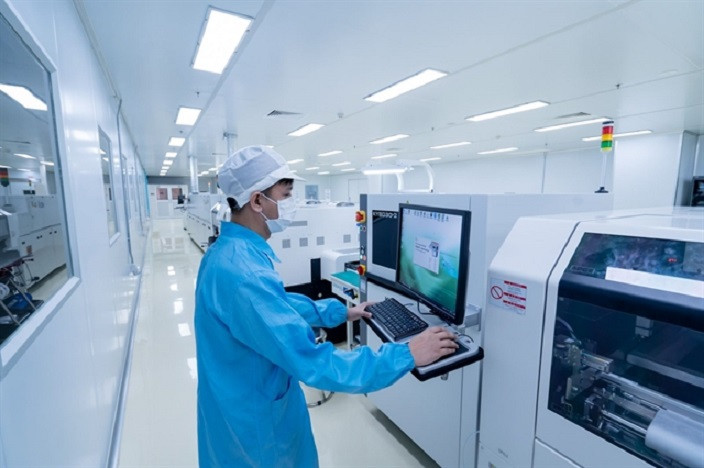
Digital human resources hold a key position in successfully implementing digital transformation because they are the factors capable of mastering and grasping new technologies.
Việt Nam needs at least 50,000 engineers by 2030, ten times the current number, to have a place on the world semi-conductor map.
The big question is how to quickly train human resources on new technologies in a time of rapid technological change like today, especially in the fields of semi-conductors and AI, when the goal is to train 50,000 to 100,000 people in the near future.
Dr. Nguyễn Thanh Bình, senior programme manager of RMIT University, said that one of the weaknesses of current technology human resource training in Việt Nam is the lack of foundation.
“In terms of education, it is necessary to deeply research technology and apply technology in both finance and business. This is very important. It means the main foundation is research," Bình said.
He also pointed out that the problem for universities is what topics to research when technology is developing so quickly.
Therefore, the solution is to co-operate with businesses. Universities need to look at the current problems of businesses and the economy to research and find solutions to that problems, he said.
“We need to think about the evolution of the educational model that students do not need to take three to four years to complete a major,” he said.
“Specifically, to train 100,000 human resources in new technologies of semi-conductors and AI, a shorter educational models of six months is needed and experienced working people must be selected to help update new knowledge in a certain field."
Vũ Anh Tuấn, a representative of the HCM City Information Technology Association, agreed that Việt Nam constantly lags behind other countries in terms of technology and human resource training.
“When Intel built a semi-conductor factory in Việt Nam, they had to spend a year recruiting human resources and sending them abroad for intensive training to meet the job requirements at the factory,” Tuấn said.
“However, not all businesses can do this. Therefore, the solution is to organise short-term training courses by selecting engineers with five to ten years of experience to train in new fields for a period of one year."
However, a difficulty in new technology training in Việt Nam is the lack of machines in schools to teach models.
The current solution of schools is to rely on the help of international professors and inter-university co-operation so that students can both practise the latest technology and access world-class knowledge.
In the short term, it can be seen that students absorb new technology very quickly. However, whether good students who choose to study abroad will return after graduating is an issue that needs to be raised.
Experts say that the mechanism needs to be changed in both the public and private sectors to keep talented people staying to research, contribute and solve businesses' and the society’s issues rather than going abroad.
In the future, it is possible to combine schools and businesses to train experts in Việt Nam.
At a recent conference on developing human resources for the semi-conductor industry, Minister of Information and Communications (MIC) Nguyễn Mạnh Hùng said that human resource preparation should not only be based on long-term vision and forecasts but still on market demand.
Commitments on human resources need to balance between training institutions and domestic and foreign semi-conductor businesses will create output and ensure the project's success, Hùng said.
“Sometimes we say there is a lack of high-tech human resources, but to some extent that is not true. If paid well, there wouldn't be a shortage of human resources as there is at present.
“If we pay information technology engineers VNĐ10 million (US$400) per month, nobody is willing to do, but if we pay them VNĐ50 million per month, the human resource will start to be redundant.”
According to the minister, the lack of semi-conductor workers is short-term, so in addition to long-term research and training, Việt Nam still has to focus on fast training and retraining for engineers in information technology, software technology and electronics.
At present, Việt Nam has about 600,000-700,000 engineers and there is no country that has 'turned into a dragon or tiger' without an electronics industry.
“The countries leading in the semi-conductor industry in the region such as Korea, Japan, and China all have developed electronics industries,” Hùng said.
“Therefore, Việt Nam's semi-conductor industry must go with the electronics industry and semi-conductor and electronics human resources must also be trained together.” — VNS